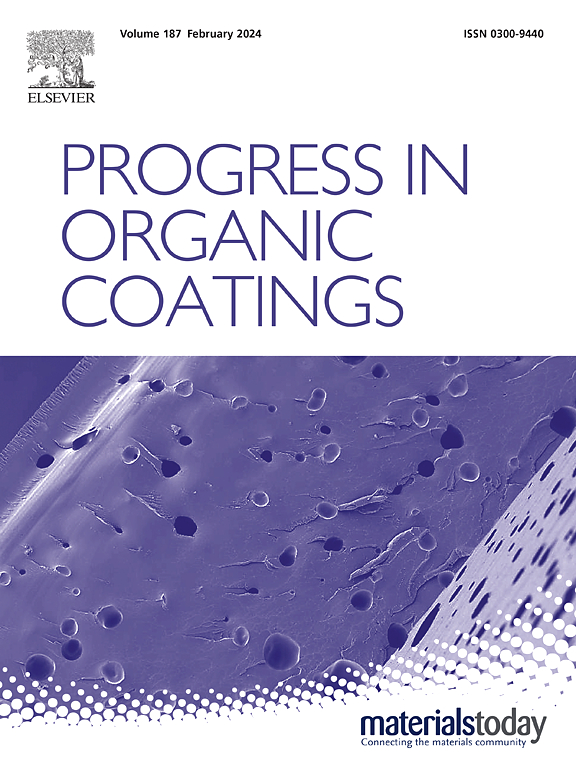Critical investigation of the long-term integrity of sustainable anti-corrosion coatings in static and dynamic humid environments
IF 6.5
2区 材料科学
Q1 CHEMISTRY, APPLIED
引用次数: 0
Abstract
This study evaluated the water-induced degradation of epoxy-based coatings modified with eco-friendly corrosion inhibitors in static and dynamic humid environments, designed to replicate conditions characteristic of marine exposure. Using electrochemical impedance spectroscopy, surface and interfacial analyses, and mechanical testing, degradation of coatings applied on mild steel samples was assessed under stagnant, flowing, and salt-spray conditions. The degradation trend of coatings significantly increased in salt-spray tests through elevated temperature (35 °C) and water-induced degradation of the epoxy matrix. Hydrodynamic flow also accelerated degradation through enhanced water diffusion and stresses arising from both water absorption and flow. Pure epoxy coatings lost their protective properties after 90 days in stagnant solutions, 77 days in flowing solutions, and 56 days in salt spray tests. Incorporating calcium borosilicate (CBS), zinc calcium strontium aluminum orthophosphate silicate hydrate (ZCP), and strontium phosphosilicate (SPS) into the epoxy matrix delayed water uptake and coating delamination. CBS-modified coatings extended protection more than twofold in stagnant and flowing environments, with performance in salt spray comparable to pure epoxy. ZCP-pigmented coatings preserved their integrity in stagnant conditions and doubled protection in salt spray and flowing scenarios. SPS-pigmented coatings demonstrated exceptional durability, maintaining integrity for over 210 days across all conditions. These results highlight the critical role of selecting inhibitors suited to specific environmental conditions and demonstrate that water-induced degradation of epoxy coatings is governed by multifaceted interplay of the coating's mechanical properties, interfacial electrochemical activities, and changes in the chemistry of environment at the metal-coating interface.

求助全文
约1分钟内获得全文
求助全文
来源期刊

Progress in Organic Coatings
工程技术-材料科学:膜
CiteScore
11.40
自引率
15.20%
发文量
577
审稿时长
48 days
期刊介绍:
The aim of this international journal is to analyse and publicise the progress and current state of knowledge in the field of organic coatings and related materials. The Editors and the Editorial Board members will solicit both review and research papers from academic and industrial scientists who are actively engaged in research and development or, in the case of review papers, have extensive experience in the subject to be reviewed. Unsolicited manuscripts will be accepted if they meet the journal''s requirements. The journal publishes papers dealing with such subjects as:
• Chemical, physical and technological properties of organic coatings and related materials
• Problems and methods of preparation, manufacture and application of these materials
• Performance, testing and analysis.
 求助内容:
求助内容: 应助结果提醒方式:
应助结果提醒方式:


